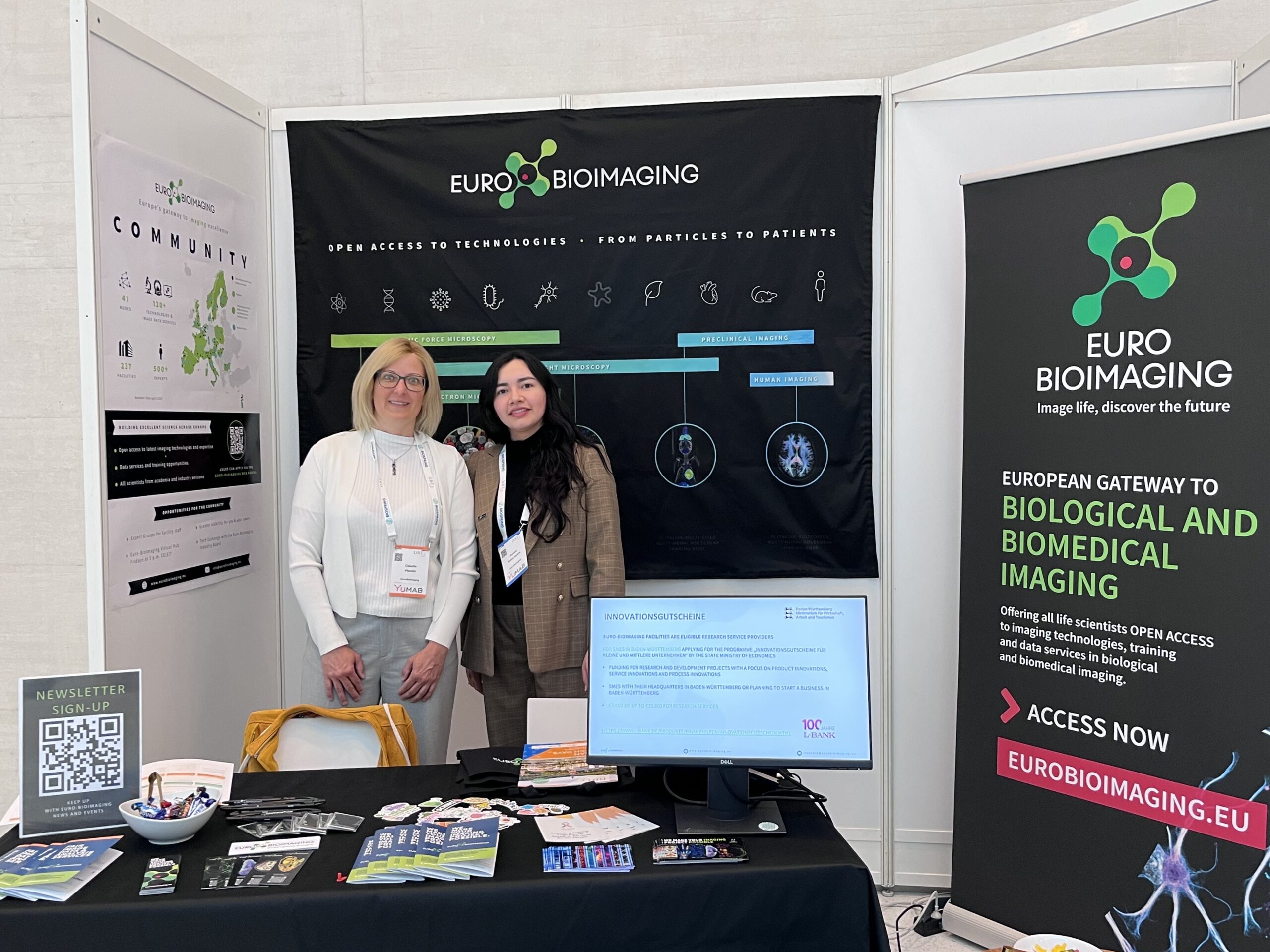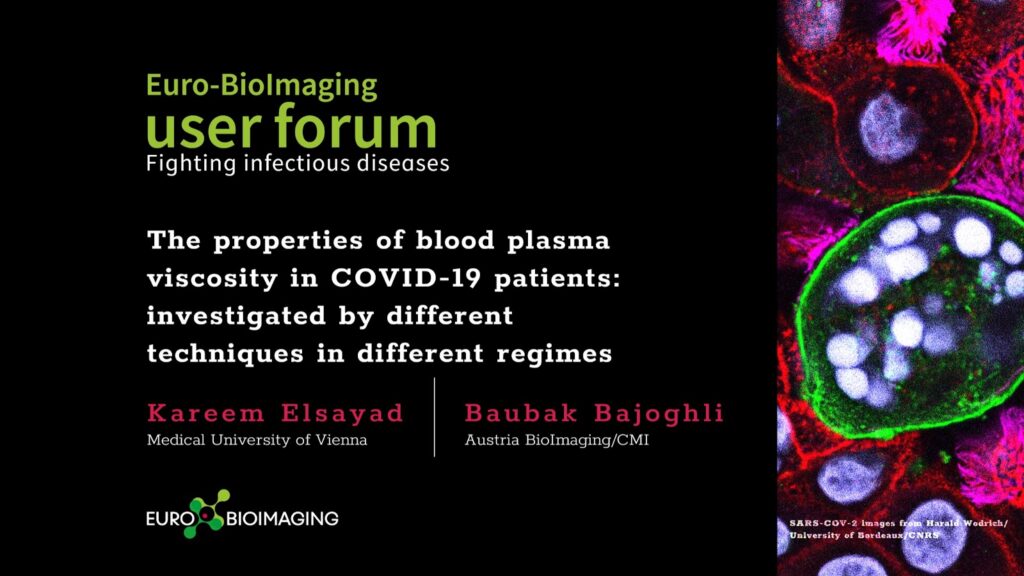
The properties of blood plasma viscosity in COVID-19 patients: investigated by different techniques in different regimes
Euro-BioImaging is organizing an online User Forum on October 6, 2022, from 14:00-17:00 CEST. This event will highlight the importance of cutting-edge imaging technologies in support of fighting infectious diseases and showcase the specific expertise available at our Nodes across Europe through case studies presented in tandem with the research community.
At this event, Kareem Elsayad, Medical University of Vienna, will explain Brillouin Light Scattering spectroscopy was used at the Austrian BioImaging/CMI Node to study the rheological properties of healthy and pathological (COVID-19 patients with different degrees of severity) in different regimes.
Hear this talk and others like it on October 6 at the Euro-BioImaging User Forum: Fighting infectious diseases.

Abstract
Kareem Elsayad, Medical University of Vienna
Baubak Bajoghli, Austria BioImaging/CMI
The viscosity of blood plasma is important for physiological function. It has been shown during the course of the COVID-19 pandemic that it is significantly elevated in severely ill COVID-19 patients, and linked to mortality, with fatality frequently also a direct consequence thereof. This can be attributed in part to the prominence of coagulation agents during infection (especially in early COVID-19 strains). Understanding the physical-chemical details resulting in this, identifying associated risk factors, along with possible mitigation strategies can prove to be lifesaving in many cases. In addition, the realization of techniques to rapidly identify criticality (i.e. prognostics) can also provide valuable time for early medical intervention and improved outcomes.
While devastating in its societal impact, the COVID-19 pandemic has also provided us with an invaluable collation of well-classified samples that can be definitively associated with a single pathological affliction (I.e. obtaining similarly well-classified sample sets for a given flu-strain would have been unimaginable previously). It thus provides a fertile basis for studying the effect a pathology can have on chemical and physical properties of a system.
In our studies we apply shear rheology and Brillouin Light Scattering spectroscopy to study the rheological properties of healthy and pathological (COVID-19 patients with different degrees of severity) in different regimes. The former technique measures the shear properties on slow time scales, whereas the latter measures the damping properties at picosecond time scales which are acutely sensitive to the nature of intermolecular interactions and chemistry. While often correlated, we find that the discrepancies in their correlation may serve as important indicators of the disease severity and outcome in certain classes of patients. Taken together they paint a comprehensive picture of the importance of the physical-chemical properties of plasma, and may allow for the identification of risk groups and treatment/mitigation strategies. Our results highlight the importance of multimodality in providing novel mechanistic and medical insights. They also demonstrate the medical usefulness of Brillouin Light Scattering spectroscopy for elucidating parameters of direct medical relevance (e.g. the effective bulk viscosity), an approach we term Brillouin Scattering Rheology, that can be expected to find diverse other medical applications.
More news from Euro-BioImaging


April 17, 2025
Ilaria Testa lights up EVOLVE Mentoring Masterclass on interdisciplinary science, SMART microscopy and team building
In a compelling EVOLVE Mentoring Masterclass hosted by Euro-BioImaging, Professor Ilaria Testa offered a multifaceted look into her scientific journey, from her interdisciplinary path…
